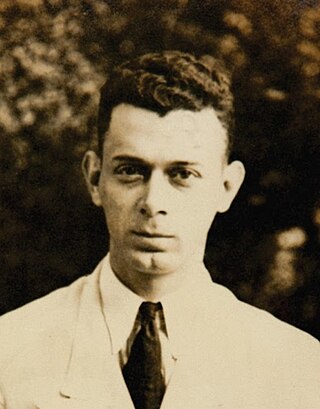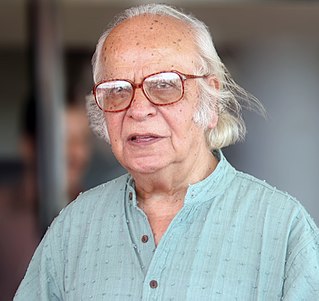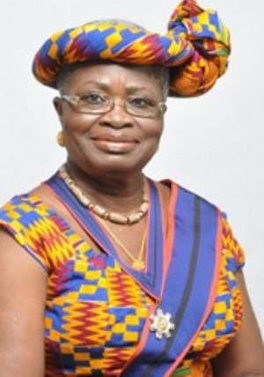Related Research Articles

Beijing Forestry University is a public university located in Beijing, China. It is affiliated with the Ministry of Education, and co-sponsored by the Ministry of Education, the National Forestry and Grassland Administration, and the Beijing Municipal People's Government. The university is part of Project 211 and the Double First-Class Construction.
François Le Lionnais was a French chemical engineer and writer. He was a co-founder of the literary movement Oulipo.

José Reis was a Brazilian scientist, journalist, scientific leader and science writer.

The Kalinga Prize for the Popularization of Science is an award given by UNESCO for exceptional skill in presenting scientific ideas to lay people. It was created in 1952, following a donation from Biju Patnaik, Founder President of the Kalinga Foundation Trust in India.

Ernst Wolfgang Hamburger was a German-born Brazilian physicist and popularizer of science. Hamburger was internationally known for his activities regarding public understanding of science. He was the director of Estação Ciência, an interactive science museum in São Paulo. He won the UNESCO Kalinga Prize for the Popularization of Science, the José Reis Award for the Divulgation of Science, the medal of the Brazilian Order of Scientific Merit, and was a member of the Brazilian Academy of Sciences.

The Carlos J. Finlay Prize is a biennial scientific prize sponsored by the Government of Cuba and awarded since 1980 by the United Nations Educational, Scientific and Cultural Organization (UNESCO) to people or organizations for their outstanding contributions to microbiology and its applications. Winners receive a grant of $5,000 USD donated by the Government of Cuba and an Albert Einstein Silver Medal from UNESCO.

Yash Pal was an Indian scientist, educator and educationist. He was known for his contributions to the study of cosmic rays, as well as for being an institution-builder. In his later years, he became one of the leading science communicators of the country.

Li Zhijian was a Chinese physicist. He was a pioneer of Chinese microelectronics. He was former Chief Director of the Institute of Microelectronics, Tsinghua University; and the ex-Chairman of the Academic Committee, School of Information Science and Technology, Tsinghua University.

Beijing, previously romanized as Peking, is the capital city of China. With more than 22 million residents, it is the world's most populous national capital city as well as China's second largest city after Shanghai. It is located in Northern China, and is governed as a municipality under the direct administration of the State Council with 16 urban, suburban, and rural districts. Beijing is mostly surrounded by Hebei Province and neighbors Tianjin to the southeast; together, the three divisions form the Jing-Jin-Ji cluster. It is ranked as the 10th most important city in the world by Knight Frank.

Guo Yonghuai was a Chinese aerospace engineer and aerodynamics scientist.

The China Science and Technology Museum is a national-level science and technology museum located in Chaoyang, Beijing, China. Established in 1988, it is affiliated with the China Association for Science and Technology.

Emil Samsonovich Gabrielian was an Armenian physician and academician. From 1971 to 1975, he served as the Rector of Yerevan State Medical Institute, and from 1975 to 1989, he was the Minister of Health of Armenia.
Gokulananda Mahapatra was an Indian scientist and science fiction writer, who popularized science in the Odia language. Mahapatra has authored over 95 science fiction and children science books. Some of his notable contributions are Krutrima Upagraha, Prithibi bahare Manisha, Chandra ra Mrutyu, Nishabda Godhuli, Madam Curie and Nila Chakra Bala Sapare. He was the founding member of Orissa Bigyana Prachar Samhiti with the objective of making science popular in the state of Orissa. He received Orissa Sahitya Akademy Award for his book E juga ra sreshtha abiskara.

Marian Ewurama Addy was a Ghanaian biochemist and the first Host of the National Science and Maths Quiz. The first Ghanaian woman to attain the rank of full professor of natural science, Addy became a role model for school girls and budding female scientists on the limitless opportunities in science, technology, engineering and mathematics (STEM) disciplines. Marian Addy was also a Fellow of the Ghana Academy of Arts and Sciences, elected in 1999. In the same year, she was awarded the UNESCO Kalinga Prize for the Popularization of Science.
Narender K. Sehgal was an Indian physicist, scientific administrator, and science populariser. He was born in Lahore. He worked as Scientific Officer in the Theoretical Reactor Physics Division of Bhabha Atomic Research Centre. In 1963 he went to US for his MSc and PhD in particle physics from the University of Wisconsin–Madison. He became professor of physics at the Somali National University in Magadiscio, East Africa. He returned to India in 1978 as visiting scientist at the Space Applications Centre (SAC) of Indian Space Research Organisation (ISRO). In 1982 he joined the Department of Science and Technology of the Government of India. He was head of the National Council for Science and Technology Communication (NCSTC) and later Vigyan Prasar, where he remained until his retirement in 2000.
Dorairajan Balasubramanian, popularly known as Professor Balu, is an Indian biophysical chemist and ocular biochemist. He is a former President of Indian Academy of Sciences and a director of research at the Prof. Brien Holden Eye Research Centre of L. V. Prasad Eye Institute, Hyderabad. A recipient of the National Order of Merit (France), Balasubramanian was honored by the Government of India, in 2002, with the fourth highest Indian civilian award of Padma Shri.
Li Fanghua was a Hong Kong-born Chinese physicist. She was a member of the Chinese Academy of Sciences, The World Academy of Sciences, and the International Union of Crystallography. She was also the director of Chinese Society of Physics and China Union of Crystallography, and an editor of the Journal of Chinese Electron Microscopy Society, J. Electron Microscopy, Chinese Physics Letter, and Chinese Journal of Physics.

Martin Rendel is a German cultural manager and university professor. Innovation through intercultural and interdisciplinary cooperation is the main focus of his work.

Li Lanjuan, also romanized as Lan-Juan Li, is a Chinese epidemiologist and hepatologist. She is a professor at Zhejiang University School of Medicine, an academician of the Chinese Academy of Engineering, and serves as the director of the State Key Laboratory for Diagnosis and Treatment of Infectious Diseases. She developed Li-NBAL, an artificial liver support system that is used to sustain the lives of people suffering from acute liver failure, and won multiple national awards for her roles in combatting the SARS, H1N1, and H7N9 epidemics.
References
- ↑ Bardon, Agnes. "Xiangyi Li (China) awarded 2013 UNESCO Kalinga Prize for the Popularization of Science". UNESCO. Retrieved 7 June 2014.
- ↑ "Creator of Beijing Science Museum Takes the UNESCO Kalinga Prize". Searchgi. Retrieved 7 June 2014.